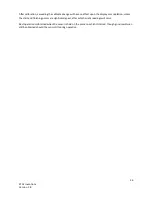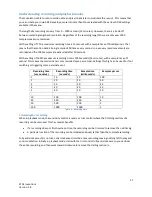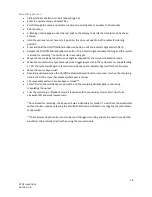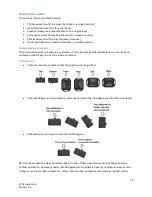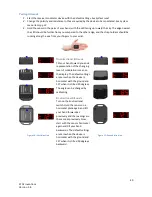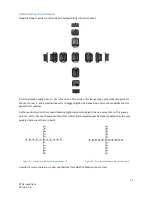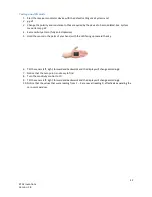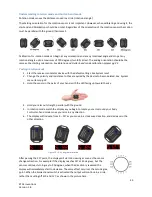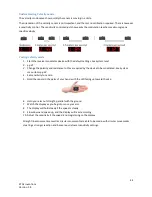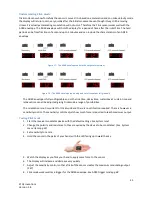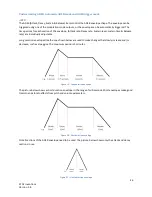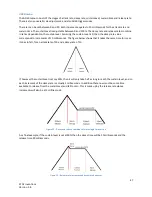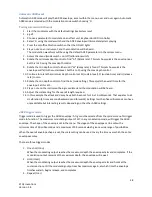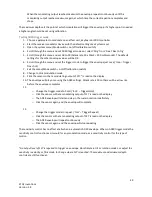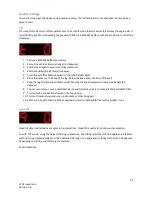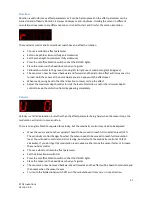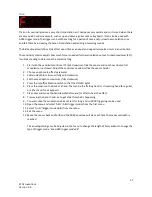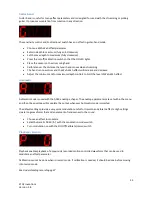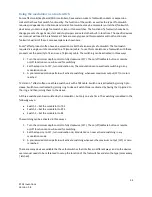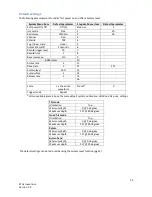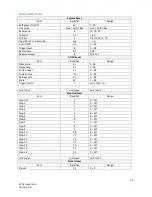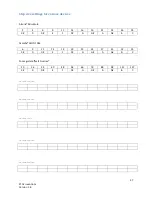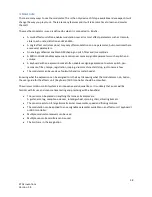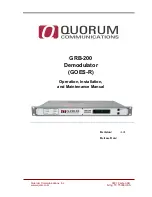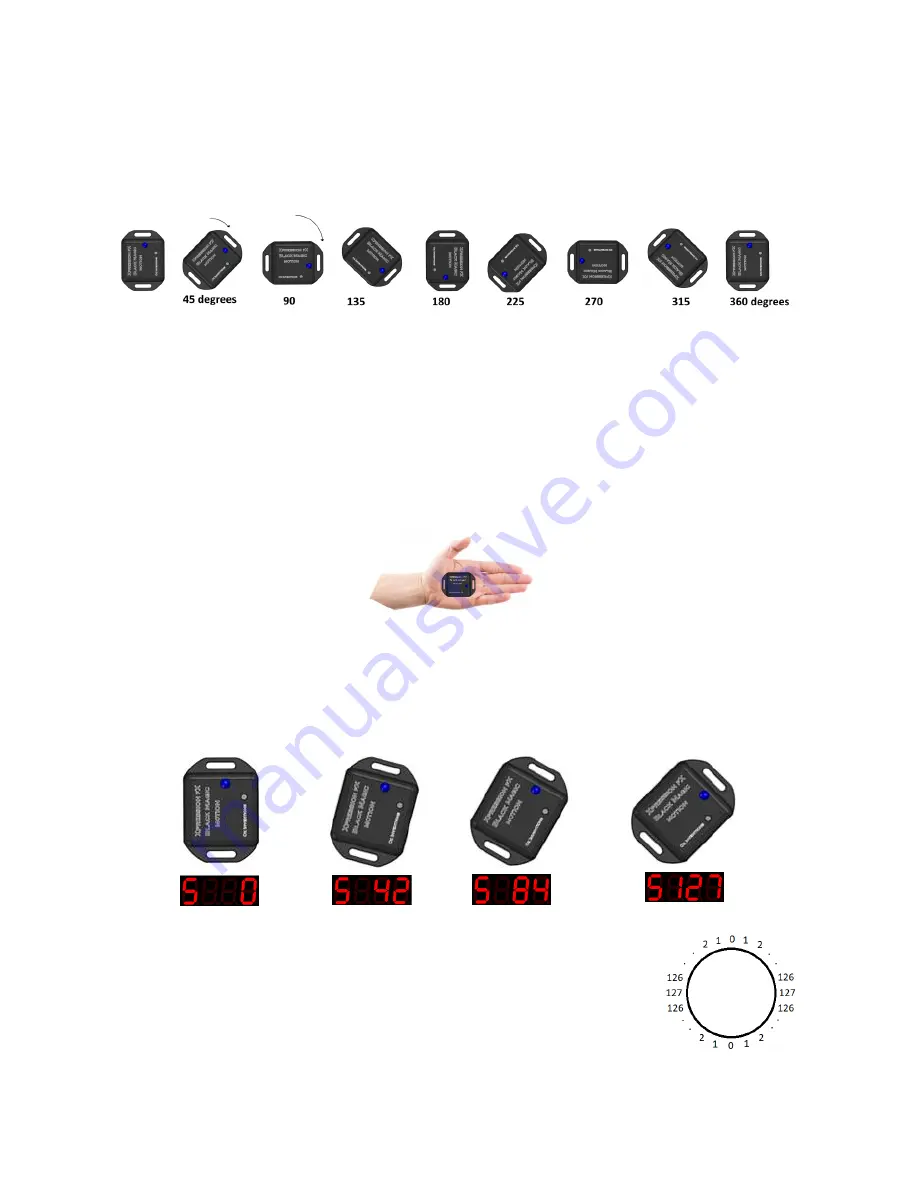
43
© Oz inventions
Version 1.8
Understanding rotation mode and Guitar-hand mode
Rotation mode senses the distance moved in a circle (rotational angle).
The starting orientation for the rotation sensor is not important. However, when calibrating and using it, the
start and end Orientations should be similar. Regardless of the orientation of the rotation sensor the motion
must be parallel with the ground (horizontal).
Calibration for rotation mode can begin at any orientation and at any rotational angle and stop at any
rotational angle up to a maximum of 720 degrees (two full circles). The ending orientation should be the
same as the starting orientation.
See Rotation and Guitar-hand
mode calibration process
pg 35
Testing rotation mode
1.
Start the receiver modulator device with the default settings.
See System reset
2.
Change the polarity and resistance to those required by the device to be modulated.
See System
menu
items
pg 23
3.
Hold the sensor in the palm of your hand, with the LED facing up toward the sky.
4.
Hold your arm out straight, parallel with the ground
5.
In rotation mode watch the display as you begin to rotate your arm around your body
For Guitar-hand mode move your arm in any direction
6.
The display will increase from 0 – 127 as you move in a clock wise direction, and decrease in the
other direction
Figure 16 – A 45 degree calibration
After passing the 127 point, the display will start decreasing as soon as the sensor
changes direction. For example if the display reaches 127 at 45 degrees, but the
sensor continues turning say to 90 degrees, when the direction is reversed the
display will immediately start to decrease. The same effect occurs at the zero degree
point. When the bidirectional switch is activated the output will continue in a circle
rather than cutting off at 0 and 127, as shown in the picture here.








